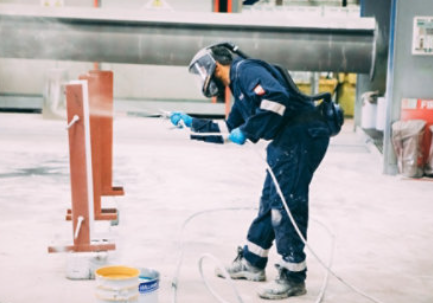Tips to Enhance Building Safety with Fireproofing

Fire safety is a cornerstone of modern construction, especially in cities like Valencia where both residential growth and industrial activity demand robust building standards. As regulations evolve and environmental concerns grow, architects, developers, and property managers are placing greater focus on effective fireproofing strategies to safeguard lives, properties, and investments.
Incorporating professional fireproofing services from trusted experts like Acusfoc ensures your building isn’t just compliant, but also future-ready.
What Is Fireproofing and Why Is It Necessary?
Fireproofing (or ignifugación) refers to a range of techniques and materials designed to prevent or delay the spread of fire in buildings. The aim is to contain fire, slow its progression, and provide extra time for evacuation, all while minimizing structural damage.
Key reasons fireproofing is essential:
Life Protection: Proper fireproofing can give occupants critical time to evacuate during a fire.
Property Preservation: It reduces damage to structural elements and expensive equipment or inventory.
Code Compliance: Spain enforces strict fire resistance laws through the Código Técnico de la Edificación (CTE).
Energy & Acoustic Benefits: Many fireproofing materials also serve as thermal and acoustic insulation.
Fireproofing Regulations in Spain
Spain follows EU-standard fire classifications, requiring buildings to meet minimum fire resistance thresholds. These vary based on building type (residential, commercial, industrial) and component (walls, ceilings, floors, ducts).
Materials are classified under the Euroclass system, including:
A1/A2: Non-combustible (rock wool, mineral wool)
B to E: Lower resistance levels
F: No fire performance rating
In cities like Valencia, compliance with these classifications is not just best practice—it’s legally required. Municipal governments and building inspectors actively enforce these standards, especially in high-density urban areas and zones with industrial activity
Common Fireproofing Methods Used in Valencia
Different construction types demand specific fire protection strategies. Below are the most common methods used across Valencia’s residential and industrial sectors:
1. Spray-Applied Fire-Resistive Materials (SFRMs)
These are coatings applied directly to structural steel or concrete. They expand when exposed to heat, insulating the material underneath and delaying collapse.
2. Fire-Resistant Panels
Prefabricated gypsum or calcium-silicate boards can be used in walls, ceilings, and floors. They are effective for creating fire-rated compartments within buildings.
3. Fire-Stop Systems
These seal penetrations around cables, ducts, and pipes to stop fire and smoke from traveling between compartments.
4. Intumescent Paints
These are a popular solution for aesthetic spaces. When heated, they form a charred layer that insulates the surface from fire.
5. Fireproof Insulation
Rock wool and fiberglass provide excellent thermal and acoustic insulation while also being fire-resistant. These are ideal for combined performance in comfort and safety.
The Importance of Fire Compartments in Spanish Construction
A key concept in fireproofing is compartmentation—dividing a building into sections that can contain fire for a specific period. This is especially critical in:
Multi-family apartment buildings
Hotels and hostels
Hospitals and clinics
Industrial warehouses
Creating these fire barriers requires fire-resistant walls, doors, and floors, often made from or covered with certified fireproof materials.
How Fireproofing Boosts Energy Efficiency and Acoustic Comfort
Modern fireproofing is rarely done in isolation. Many materials used for fire resistance also contribute to thermal and acoustic insulation, making them a smart choice for sustainable and comfortable buildings.
Dual-performance materials like:
Mineral wool panels: Provide fire resistance, sound absorption, and heat insulation.
Fire-rated acoustic ceilings: Offer quiet interiors for offices or residential units while protecting structural components.
By choosing materials that serve multiple purposes, you can reduce costs, improve energy ratings, and ensure overall performance.
Applications of Fireproofing in Valencia’s Construction Scene
Valencia is a city where new builds and renovation projects coexist. Fireproofing solutions are commonly applied to:
1. Historic Building Renovations
Many older structures are being retrofitted for safety, especially in Valencia’s city center. Lightweight fireproof boards and coatings are ideal for preserving original aesthetics while improving safety.
2. Industrial Zones
Areas like Fuente del Jarro or El Oliveral require heavy-duty fireproofing due to combustible materials and operational heat. Spray coatings and rock wool panels are commonly used.
3. Modern Apartment Complexes
Fire stops, fire doors, and insulation between units are essential for protecting residents and meeting CTE standards.
4. Commercial Spaces
Restaurants, shopping centers, and offices require elegant yet functional fireproofing, such as intumescent paints or concealed fire-rated panels.
The Cost of Ignoring Fireproofing
Skipping or minimizing fireproofing can have serious consequences:
Legal penalties: Fines or work stoppages from building inspectors.
Insurance issues: Non-compliance can void insurance claims after a fire.
Reputation damage: For builders or developers, non-compliance can hurt credibility and future business.
Investing in high-quality fireproofing through a certified partner like Acusfoc protects not just the structure, but your entire project timeline and ROI.
Choosing the Right Fireproofing Partner
Working with a local specialist ensures compliance with both national laws and regional nuances. Here’s what to look for:
✅ Experience in local building codes (especially Valencia regulations)
✅ Use of certified fireproofing materials
✅ Integrated insulation services (thermal, acoustic, and fire)
✅ Technical support and post-installation follow-up
✅ Strong reputation with builders, architects, and inspectors
acusfoc.com is known across Valencia for its high-quality fireproofing services tailored to both small-scale renovations and large industrial installations.
Read Also: Building A Secure Future With The Right Investment Plan
How to Begin a Fireproofing Project in Valencia
Starting a fireproofing project requires careful planning and consultation. Here are the general steps:
- Site Evaluation: Inspect the building type, usage, and fire risk areas.
- Material Selection: Choose the best fire-resistant solutions that also meet thermal or acoustic needs.
- Project Design: Create a fire compartment and fire-stop strategy.
- Installation: Work with certified installers to ensure correct application.
- Inspection & Certification: Ensure everything is documented and up to code.
Final Thoughts
As construction standards rise in Spain, fireproofing has evolved from a safety afterthought to a foundational part of building design. Whether you’re renovating a residential block in Valencia’s old town or building an industrial plant in its outskirts, proper fireproofing isn’t just smart—it’s mandatory.
By working with specialists like Acusfoc, you ensure your project meets regulations, enhances occupant safety, and improves long-term building performance.
Fire safety, efficiency, and comfort don’t have to be separate goals. With the right partner, you can achieve all three in one streamlined process.







